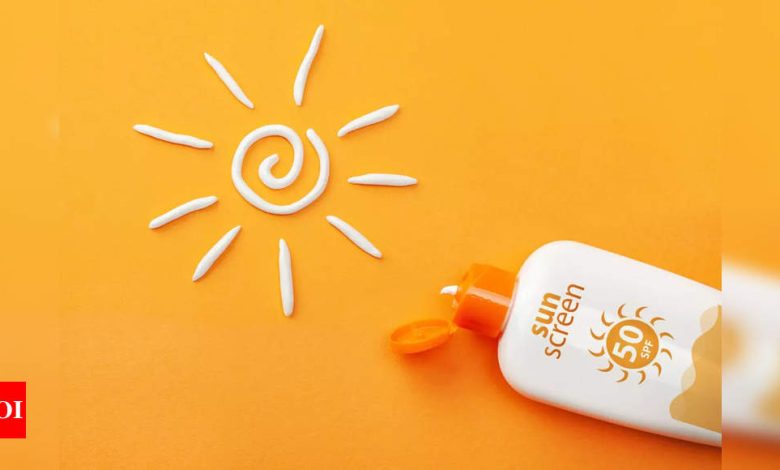Chemical vs mineral sunscreens: Understanding the differences for better sun protection

Sunscreens are cornerstones of sun protection, protecting our skin from the deleterious effects of ultraviolet (UV) radiation. However, sunscreens can be bewildering, with two main categories catching for our attention: chemical and mineral sunscreens. While both offer UV protection, they achieve this through different mechanisms, leading to a unique set of pros and cons.Understanding the nuances between mineral and chemical sunscreens is crucial for informed decision-making regarding sun protection practices.
Chemical Sunscreens: Absorbing the Danger
Pros
Chemical sunscreens use organic compounds, such as oxybenzone, avobenzone, and octisalate, to shield us from UV rays. They function by absorbing UV radiation and transforming it into heat, which is then dissipated from the skin. This approach offers several benefits. Chemical sunscreens have the advantage of being lightweight and cosmetically elegant. They tend to be transparent, without leaving a white cast that makes them suitable for a wide range of skin colours. Additionally, some chemical sunscreens have broad-spectrum protection, effectively protecting against both UVA and UVB rays.
Cons
The very mechanism that makes chemical sunscreens invisible can also be a source of concern. Absorption necessitates penetration into the skin, which may trigger irritation in some individuals, particularly those with sensitive skin. Furthermore, some studies have raised questions regarding the potential for certain chemical sunscreen ingredients to disrupt hormones, although more research is needed to confirm these concerns. Chemical sunscreens, particularly those containing oxybenzone and octinoxate, have raised concerns due to their documented coral toxicity and contribution to coral bleaching.
Mineral Sunscreens: Reflecting the Danger
Pros
Mineral sunscreens, also known as physical sunscreens, utilise a different approach. They employ mineral ingredients, mainly zinc oxide and titanium dioxide, to physically block UV rays. These minerals sit on the surface of the skin, forming a protective barrier that deflects and scatters UV radiation away from the skin. This method offers several advantages. Mineral sunscreens are generally less irritating to sensitive skin and provide immediate protection upon application, eliminating the need for a 20-minute wait time before sun exposure. Mineral sunscreens offer broad-spectrum protection against both UVA and UVB rays, making them effective safeguards against sunburn, premature aging, and skin cancer. Additionally, mineral sunscreens are considered reef-safe, as some chemical sunscreen ingredients have been linked to coral reef bleaching.
From Avocado to Zinc: Key nutrients for healthy skin and how to get them
Cons
The physical nature of mineral sunscreens presents some drawbacks. Their thick, white pastes can be difficult to spread and leave a visible cast on the skin, especially on darker skin tones. Newer formulations have improved cosmetically but may not be as lightweight or transparent as chemical sunscreens.
The optimal sunscreen choice hinges on individual needs and preferences. Here’s a breakdown to guide your selection:
Sensitive Skin: Mineral sunscreens are gentler and less likely to cause irritation.
Cosmetics: Chemical sunscreens often offer a more lightweight, sheer feel.
Activity Level: For water resistance, both types offer water-resistant options. Choose the appropriate SPF (Sun Protection Factor) for your activity level.
Environmental Concerns: Mineral sunscreens are considered reef-safe.
Ultimately, the most useful sunscreen is the one that you will use consistently and generously. Both mineral and chemical sunscreens offer effective protection against sun damage when applied correctly and reapplied as directed. If you have sensitive skin or are concerned about the potential risks associated with chemical filters, mineral sunscreens may be a better choice for you. However, if you prefer lightweight textures and easier application, chemical sunscreens may be more suitable.
Inputs by Dr. Atula Gupta, MBBS, MD – Dermatology , Venereology & Leprosy
Dermatologist, Dermatosurgeon, Pediatric Dermatologist
Source: times of india
Related Posts
- 5 foods you must have if want Korean Glass Skin
- I Asked the Coolest People I Know: What Makes an It-Girl Lip Balm?
- 7 hairstyles for women popular in 2025 weddings
- 12 Coconut Perfumes That Smell Like an Expensive Vacation (and Not Sunscreen)
- The 6 Hats Everyone Will Be Wearing Instead of Bucket Hats This Summer





